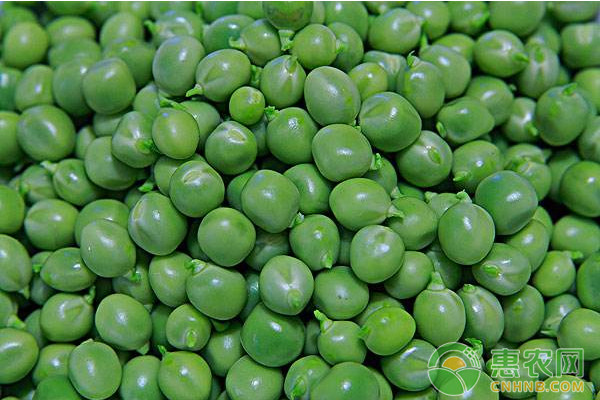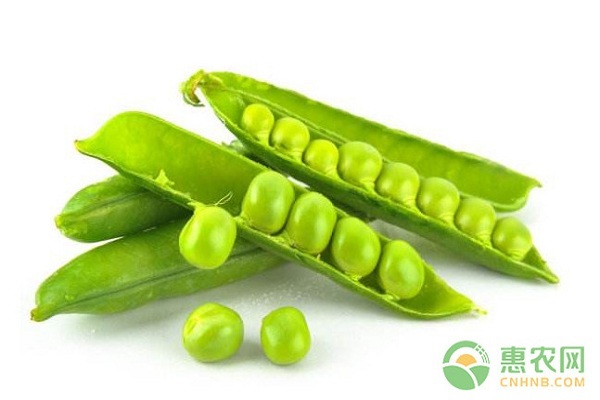Sweet and crunchy peas have always been a popular dish on people's table, and peas are the fourth soybean crop in the world. The main diseases of peas are root rot, brown spot, powdery mildew and brown streak. The main pests are black squirrels, leaf miners, etc. Let's take a look at the pea pest control technology!

1, pea root rot
ã€Signal Symptoms】
From seedlings to adult plants, the disease can occur in the flowering stage, mainly in the root or stem base. The leaves of the diseased plants first turn yellow, and then gradually develop to the middle and upper parts, resulting in yellowing and wilting of the whole plant. The main and lateral roots became dark brown or reddish, and the nodules and root hairs were significantly reduced. Lightly, the plants were dwarfed, the stems were thin, and the leaf branches were wilting or withered. The pathogen spreads through soil, diseased tissues and seeds, and is invaded by seed coat and lateral roots, which is easily confused with blight. The incidence is generally heavy in dry years.
[Control method]
(1) Select resistant varieties, such as Gongjing, Gansu, Xiaodou 60, and Xiaodou 704 in Gansu.
(2) Seed dressing: seed dressing with 20% triadimefon EC at a seed weight of 0.25%, or seed dressing with 75% chlorothalonil wettable powder with a seed weight of 0.2%, all have certain effects.
2, pea brown spot
ã€Signal Symptoms】
Mainly harmful leaves, stems and pods. The leaves are infected with irregular lavender spots. Under high temperature and high humidity conditions, the lesions spread rapidly and spread over the entire leaves. The leaves turn yellow and twisted and die, and some are dark brown irregular wheel spots, central necrosis. Produces black dots. The cause of the disease is mainly over the winter on the seeds, spread by wind and rain. Seeding too early or suffering from low temperature chilling, or soil viscosity, humidity is too high, or partial application of nitrogen fertilizer, plant growth, are easy to develop.
[Control method]
(1) Agricultural control: 2-3 years of rotation of heavy diseased and non-legume vegetables, and seed disinfection, pre-soaked in cold water for 4-5 hours, then immersed in 50 °C warm water for 5 minutes, then cooled, Soaked after drying. Appropriate close planting, increase the application of potassium fertilizer.
(2) Chemical control: spray 50% benomyl WP suspension 800 times solution, 70% methyl thiophanate WP 500 times solution, 75% chlorothalonil WP 600 times solution at the beginning of the disease, every 7 Once a day, even spray 2-3 times.
3, pea powdery mildew
ã€Signal Symptoms】
At the beginning of the disease, the leaf surface is a light yellow small spot, which expands into irregularly shaped powder spots. In severe cases, the front and back sides of the leaves are covered with a layer of white powder, and finally yellowing and dead. At the end of the disease, the pink spots became gray and many small black spots appeared.
[Control method]
In the early stage of the disease, use 25% powder rust WP 2,000-3000 times solution, or 70% thiophanate-methyl WP 1000 times solution, or 50% carbendazim WP 500 times solution, or Baume 0.2 to 0.3 degree stone. Spray control such as sulphur mixture. Spray once every 10 to 20 days, and spray 2 or 3 times.
4, pea brown disease
ã€Signal Symptoms】
Mainly harmful leaves, stems and pods. The leaves are infected with irregular lavender spots. Under high temperature and high humidity conditions, the lesions spread rapidly and spread over the entire leaves. The leaves turn yellow and twisted and die, and some are dark brown irregular wheel spots, central necrosis. Produces black dots. The cause of the disease is mainly over the winter on the seeds, spread by wind and rain. Seeding too early or suffering from low temperature chilling, or soil viscosity, humidity is too high, or partial application of nitrogen fertilizer, plant growth, are easy to develop.
[Control method]
(1) Agricultural control: It is best to carry out rotation for more than 3 years with non-legume crops, and to disinfect seeds, soak seeds in warm water for 4-5 hours, then transfer them to 55 °C warm water for 5 minutes, then cool them in cold water. Soaked after drying. Appropriate close planting, increase the application of potassium fertilizer.
(2) Chemical control: Spray 50% mixed sulfur suspension 500 times solution or 75% chlorothalonil wettable powder 600 times at the beginning of the disease, once every 7 days, continuously spray 2-3 times.

5, bean stalk
[hazard symptoms]
The black stalk is a pest of the genus Diptera of the Diptera, and it is a widely distributed pest, mainly for legumes. It is invaded from the young part of the newly hatched larva through the veins and petioles. Stems, foraging the pith and xylem. If the prevention is not timely, it will cause serious production cuts.
[Control method]
(1) Agricultural control: appropriate mediation of the sowing date, staggered the adult egg spawning period, in order to reduce the damage.
(2) Chemical control: 40% dimethoate, or 40% omethoate, or 50% chlorpyrifos, or 45% phoxim emulsifiable concentrate, all need 1000 times of water, 75 kg of acre application liquid .
6, pea leaf miner
[hazard symptoms]
The genus Diptera, Diptera, is also known as the leaf miner, commonly known as the archaea, the leaf-leaf, the leafhopper, etc. It is a polyphagous pest with more than 130 host plants in the vegetable. It mainly harms peas, broad beans, sage, celery, cabbage, radish and cabbage.
[Agricultural Control]
(1) Agricultural control: After the vegetables are harvested, the leaves, weeds, burned or fattened in the field are removed in time to reduce the number of insects in the field.
(2) Chemical control: Selecting agents with short residual effects, easy photolysis and hydrolysis, in addition, because the larvae are harmful, the drug must seize the critical moment from the peak of spawning to the early stage of hatching. Killing cockroach (21% synergistic cyanoma emulsifiable concentrate) 800 times solution, 2.5% deltamethrin or 20% fenvalerate 2500 times solution, 10% bromo horse emulsifiable concentrate 2000 times solution, 10% uranium emulsifiable concentrate 1500 times solution , 1.8% insect light and 1.8% harmful kill 3000-4000 times liquid spray. In the prevention and treatment of appropriate spraying, it can receive better control effects.
Integrated pea disease prevention
1. Selection of resistant varieties: Generally, fine pod peas are more resistant than large pod peas.
2, the implementation of rotation: Because the pea root secretions have an impact on the nodule activity and root growth of the next year, it is also avoidable. Rotation can be carried out with non-legume crops such as melons and grasses.
3. Seed disinfection: seed dressing with 70% methyl thiophanate in seed weight 0.3%, or 50% carbendazim WP and 75% chlorothalonil WP (1:1) mixed and sealed Sowing after 48 to 72 hours.
4. Strengthen field management: rational fertilization and close planting, avoid planting in low-wet areas, and adopt sorghum or ridge cultivation. Add phosphorus and potassium fertilizer to avoid partial application of nitrogen fertilizer, and spray citronin regularly to improve disease resistance.
5, do a good job in field health: timely removal of diseased plants and plants affected by insects and straw and roots after harvest, and concentrated deep or burned, reducing the source of disease and insect sources.
6. Chemical method: The pea seedling stage should be treated with pea seedling stage as the key point of prevention and control. It can be used with 1.8% quercetin emulsifiable concentrate (avermectin) 2000 times solution or 50% phoxim emulsifiable concentrate 1000 times solution or 48%. Loess emulsifiable concentrate 1000 times liquid root or spray control.
The above is the whole content of the pea pest control technology brought by the small series of Huinong. The vegetable farmers who need it can refer to it, but here, Hui Nongwang Xiaobian reminds everyone that the specific operation is subject to their actual conditions. More agricultural related information is available at Huinong.com!
Black Fungus Extract,Agaric Extract,Auricularia Auricula Extract,Auric Polysaccharide
Shaanxi Zhongyi Kangjian Biotechnology Co.,Ltd , https://www.zyplantextract.com